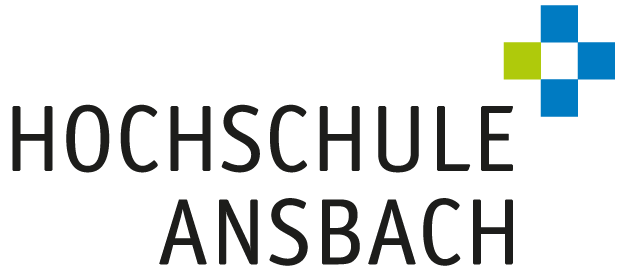
Compliance und Blockchain - eine Chance?
Fehr, Stefanie (2019)
Vortrag im Rahmen des Vernetzungs-Workshop des hessischen Blockchain Center, Kassel, Juli 2019.
Dimensional and Geometrical Tolerances in Mechanical Engineering – a Historical Review
Walter, Michael S. J. (2019)
Machine Design 11 (3), 67-74.
Open Access Peer Reviewed
The specification of cost-optimal tolerances is ever since a major challenge for design engineers to ensure functionality as well as economic efficiency of mechanical assemblies. However, the underlying conflict "as tight as required, as wide as possible" is as old as the design, manufacturing of mechanical parts and their assembly itself – going back to times, when first plain tools were produced by hand using stones and wood. Since then, a long and challenging path has been taken by researchers and industrial experts to develop today’s effective methods and tools on tolerance engineering. In this paper a historical review on tolerance engineering of dimensional and geometrical tolerances in mechanical engineering is presented. Starting with the early beginnings during the age of individualized manufacture, four ages of tolerance engineering are analyzed and its major achievements are presented and discussed. Finally, we are looking ahead – focusing on current and upcoming trends in tolerance engineering.
Assessing the biocompatibility of wound healing matrices: an in-vitro tool box
Hänel, Svenja (2019)
Applied Research Conference 2019. ARC 2019. Regensburg, 08.07.2019. Berlin: Pro Business digital, 219-225.
Revision of a Matlab Production Monitoring System for the Aluminium Die Casting Industry
Schlüter, Wolfgang; Mielke, Fabian (2019)
Applied Research Conference 2019. ARC 2019. Regensburg 2019, 563-570.
Current status and need for thermal insulation in electric cars to reduce heating and cooling capacity
Haas, Sebastian; Walter, Michael S. J. (2019)
Applied Research Conference 2019, Regensburg.
Material- und Energieflusssimulation in Aluminium-Druckgussbetrieben
Dettelbacher, Johannes; Schlüter, Wolfgang (2019)
MATLAB EXPO 2019. MathWorks. München, 02.07.2019.
Nutzung des ADM-Modells zur Optimierung des Methanflusses in Biogasanlagen
Schlüter, Wolfgang; Wagner, David (2019)
MATLAB EXPO 2019.
Applications of DyCA
Kern, Moritz (2019)
Workshop on Applied Mathematics - Dynamical Systems. IT4Innovations National Supercomputing Center. Technical University of Ostrava, 01.10.2019.
Modellprädiktive Regelung von Biogasanlagen durch mechanistische Modelle und maschinelles Lernen
Gröper, Mirko; Schlüter, Wolfgang (2019)
Johannitag. Triesdorf, 30.06.2019.
Barrierefreies multimediales Leitsystem
Paul, Markus; Zöller, Dunja (2019)
Julius-Maximilians-Universität Würzburg - Kontakt- und Informationsstelle für Studierende mit Behinderung und chronischer Erkrankung (KIS) (Hg.): Forschungs- und Praxisverbund Inklusion an Hochschulen und barrierefreies Bayern. Abschlussbericht, 119-141.
Does Size Matter? Investigating Laypeoples’ Preferences for Roll-out Scenarios of Alternative Fuel Production Plants
Arning, Katrin; Zaunbrecher, Barbara; Borning, Maximilian; van Bracht, Niklas; Ziefle, Martina; Moser, Albert (2019)
Arning, Katrin; Zaunbrecher, Barbara; Borning, Maximilian; van Bracht, Niklas...
Proceedings of the 8th International Conference on Smart Cities and Green ICT Systems. Heraklion, Crete, Greece, 3.-5.5.2019: SCITEPRESS - Science and Technology Publications, 91-99.
DOI: 10.5220/0007697100910099
Identifying the "Do's" and "Don'ts" for a trust-building CCU product label
Linzenich, Anika; Arning, Katrin; Ziefle, Martina (2019)
Proceedings of the 8th International Conference on Smart Cities and Green ICT Systems. Heraklion, Crete, Greece, 3.-5.5.2019: SCITEPRESS - Science and Technology Publications, 58-69.
The influence of intermediaries' advice on energy-efficient retrofit decisions in private households
Arning, Katrin; Zaunbrecher, Barbara; Ziefle, Martina (2019)
eceee Summer Study proceedings, 7-065-19.
Verpflichtungen für Betreiber bereits bestehender Biogasanlagen nach der AwSV
Bartsch, Anja; von Blumenthal, Astrid (2019)
Technische Sicherheit 7-8, 30-33.
Anspruchssicherung, Haftungsvermeidung und „Technical Compliance" für Biogasanlagenbetreiber
von Blumenthal, Astrid (2019)
Agrar- und Umweltrecht (AUR) 05/2019, 162-167.
Rechtliche Rahmenbedingungen des Peer-to-Peer-Handels mit Strom aus erneuerbaren Energien
von Blumenthal, Astrid (2019)
Biogas in der Landwirtschaft – Stand und Perspektiven. FNR/KTBL-Kongress vom 09. und 10. September 2019 in Leipzig, 398-400.
Messung der Customer Experience im Ladengeschäft mit Location-based Crowdsourcing und Geofencing
Durst, Carolin; Hacker, Janine; Berthelmann, Theresa (2019)
Digital Customer Experience. Mit digitalen Diensten Kunden gewinnen und halten, Bd. 14. Wiesbaden: Springer Fachmedien Wiesbaden, 167-180.
DOI: 10.1007/978-3-658-22542-1_12
A new Evaluation Method for the End-of-life Phase of Buildings
Figl, Hildegund; Thurner, Caroline; Dolezal, Franz; Schneider-Marin, Patricia; Nemeth, Isabell (2019)
Figl, Hildegund; Thurner, Caroline; Dolezal, Franz; Schneider-Marin, Patricia...
IOP Conference Series: Earth and Environmental Science 225, 12024.
Peer Reviewed
Häufige Fehler in der schriftlichen Produktion erwachsener Lernender des Spanischen im Anfängerstadium
Gebhard, Christian Alexander (2019)
Kontrastive Pragmatik in Forschung und Vermittlung. Deutsch, Spanisch und Portugiesisch im Vergleich. Tübingen: Narr Francke Attempto Verlag 2019 (15), 265-286.
Trainingsbuch der deutschen Sprache
Gebhard, Christian Alexander (2019)
LOGO-Praktikanten in Deutschland und wo sie zu finden sind, LOGO e.V..
Open Access
Servicestelle für Forschung und Transfer (SFT)
Hochschule Ansbach
Residenzstr. 8
91522 Ansbach
Betreuung der Publikationsseiten
Iris BoynyT 0981/4877-341
iris.boyny[at]hs-ansbach.de
